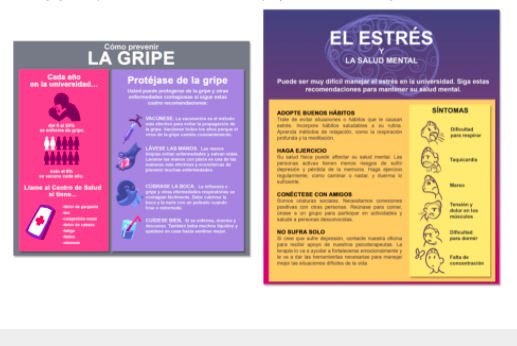Interpretive, Interpersonal, and Presentational Modes of Communication
Exploring Culture
It’s fascinating learning about the different cultures of the world. In my previous class, we also learned about the different regions and their cultures. From the use of social media, the different ways in which “Tuteo” is used in different regions of Latin America, the Nap (short sleep in the afternoon) culture in Latin America, the college lifestyle, to the people most admired in the Latin American regions. This gave us insight into what the Hispanic/Latino community was like in those forms.
This class developed into different levels. We started off by learning about family “¿Quién es mi Familia?”. We learned about traditional and non-traditional families and how these families are received in the Hispanic/Latin American nations and communities. We also did research on other countries and their treatment of non-traditional families/couples. The next cultural exploration that we did was “¿Cómo mantener la buena salud?” This next topic in English translation is “How to maintain good health?”. In this section, we discussed the different sports that can help a person to stay in good shape and maintain good health. We learned the different sports that are most favored by Latin America and how gender-inclusive the sports sector is in these regions. Later, as we dived deeper into this class we learned about the different foods in Latin America and the health benefits. Another topic we touched on was how to take care of oneself and through this, we learned how important health is to these Latin American regions and how they take care of themselves. The last cultural exploration we made for this class was learning about the different jobs in Latin America, we explored how gender roles influence jobs secured by people and how the Hispanic community view gender roles, and what job is expected for one to have based on gender.
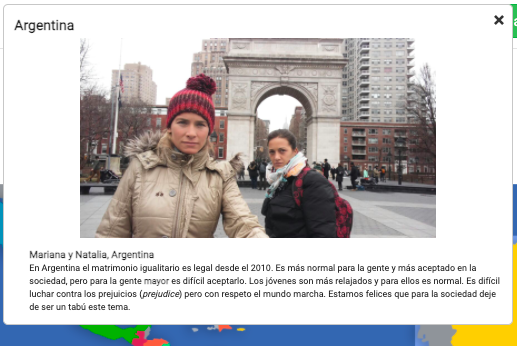
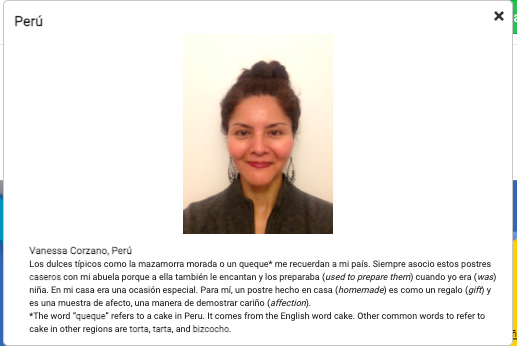
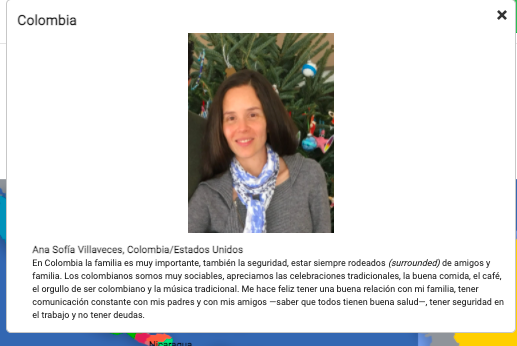
I learned so much in this class just as I did in the last class, but this level of learning was on a higher level. In both classes that I’ve taken so far, I noticed that the Hispanic community has a different tradition and perspective on a lot of things in comparison to the United States but I also understood that where I come from has a lot of culture and tradition that is very similar to of Hispanic culture, such the food.
Engaging in Communities
Engaging in your community is essential to your being. It creates a space for continuous growth and respect for individuals different from you.
It is important to engage in your community. It not only gives you a chance to meet different people, but it also provides you with a new advantage of learning about different types of people, their backgrounds, etc. Through engaging in your community, you develop a broader perspective in life and develop communication skills. Below is an image of a comment I made on one of my classmates’ projects.

My community was my classroom. It was a wonderful experience. My purpose was to learn Spanish but in doing so I got to learn more about other students through class discussions, class projects, and other assignments.
Interpersonal Communication
The entire class was based on interpersonal communication. One of them was with one of them was one of the TalkAbroad sessions I did. I spoke with my partner who is a native Spanish speaker and we discussed family. Another was between my classmates and me. We would post our projects and have comments left on our projects.
This helped strengthen my Spanish because we had to leave commentaries in Spanish on at least three projects. We would ask each other questions in Spanish during class hours and write down questions we would want to ask our partners for the class. Each assignment and activity were a challenge but the deeper we went into the course the much better it got.
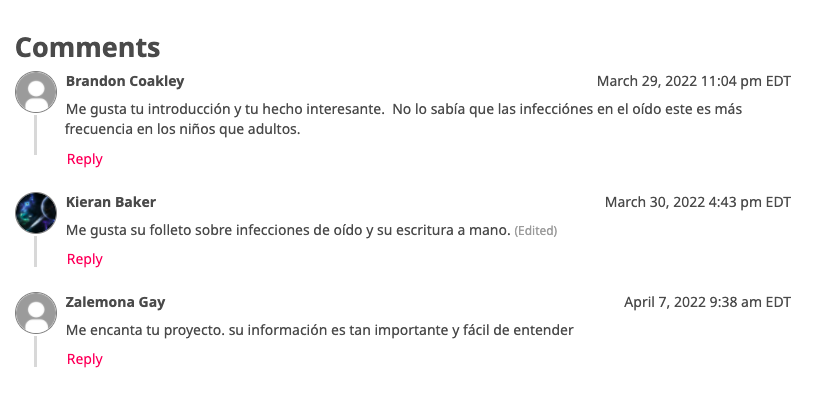
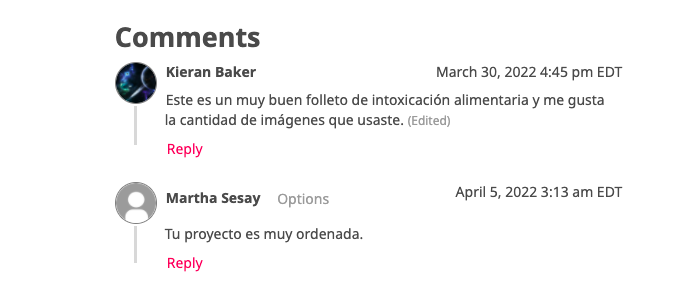
Presentational Speaking and Writing
I did a video on my family. This was the first presentational speaking that I did for this class. I introduced my family in Spanish and gave a description of them. I described my family physically and explained what they like to do on their own and with other family members.
I also wrote an infographic on ear infections and how to prevent them and take care of yourself when you have an ear infection. The title of this infographic was “Como prevenir la infección en el oído.” In this, I also discussed the symptoms that this illness comes with and some statistics.
It was nice to get to introduce my family in a different language. This was a significant learning area. I learned words that aid not only in the description of my family but also if I wanted to describe myself. Out of all the topics that were done, I loved this the most. It was a little hard trying to use certain words like morena and menor because I would use them interchangeably. In time, I adjusted well to it.
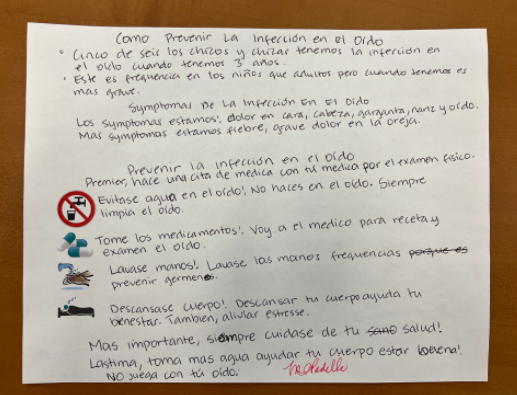
Interpretive Listening
I listened to many audios, videos, and lectures by the professor. This greatly helped in learning how to pronounce the words better.
I listened to audios between students and professors, friends, parents and their children, roommates, strangers interacting, and more. Sometimes the recordings would be too fast so I would have to replay them repeatedly to hear them properly. With listening, I learned that you must really pay attention to sounds to get them right.

Interpretive Reading
In unit 9 of the book, we were taught the importance of skimming. This was to help us identify certain words that would prompt an understanding of what the entire text meant.
Through skimming you notice or see words that are familiar and try to interpret the meanings of these words like in the previous class, certain words in Spanish were similar to English words so it was quite easy to know what that words were, but it can also be confusing because certain words that looked the same had completely different meanings. One of the activities in which we incorporated the use of skimming was when we had to read an infographic.
